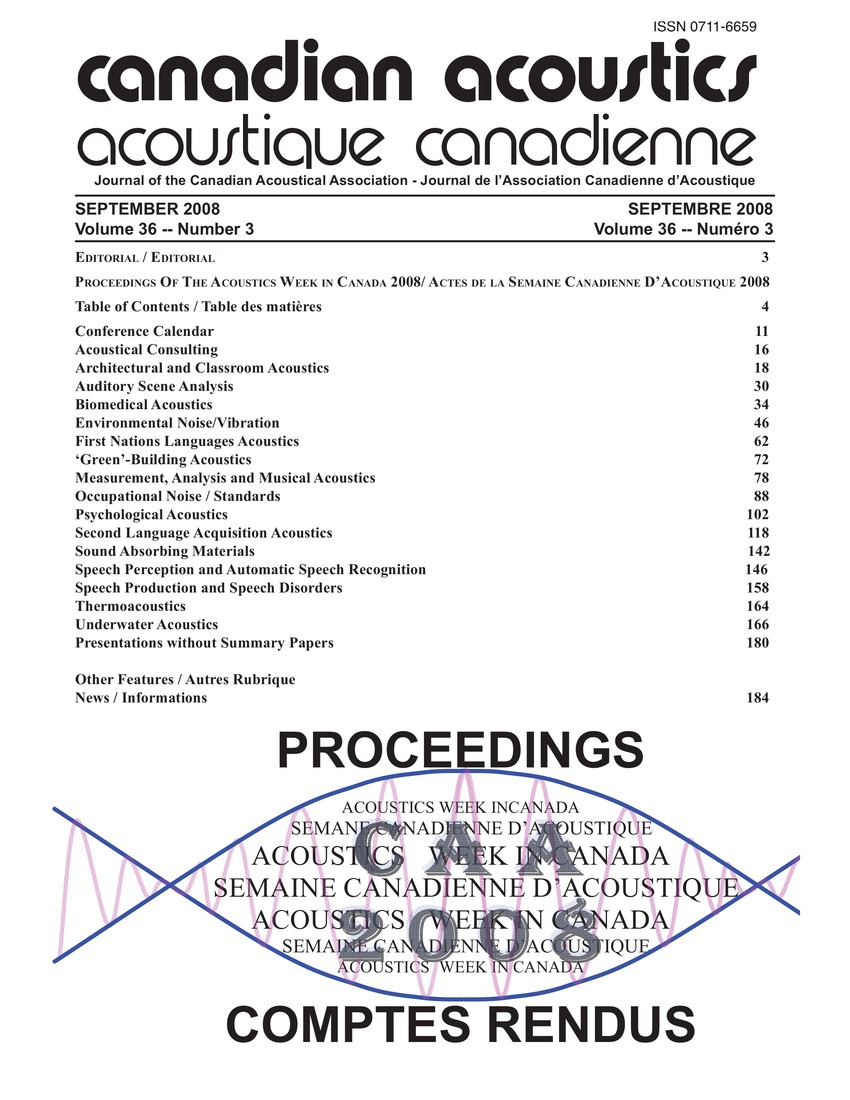Quantitative analysis of subphonemic flap/tap variation in NAE
Mots-clés :
Audio acoustics, Liquid crystal displays, Ultrasonics, Accurate, Acoustic, Alveolar regions, Boundary identifications, Kinematic, Lcd monitors, Mode informations, Optical, Quantitative analyses, Sagittal planes, Ultrasound datum, Variations ofRésumé
The quantitative analysis of subphonemic flap/tap variation in NAE was investigated. Twenty-four participants were recorded, 12 female, and 12 male. 38 unique stimuli were recorded in twelve randomized blocks. Participants were seated comfortably in an American Optical Co. Ultrasound data were recorded in B/M mode. B-mode was set to record the tongue along the mid-sagittal plane. Three parallel M-mode lines were set following the line of the anterior palate, so as to maximally intersect movement of the tongue tip through the alveolar region. stimuli was presented on an LCD monitor using PXLab in two groups of six blocks of 38 stimuli each, with a break between the two groups. the ultrasound audio and video were separated to allow for accurate acoustic boundary identification. It was observed that the M-mode information allowed for a relatively straightforward identification and distinction of the four kinematic variations of taps and flaps.Fichiers supplémentaires
Publié-e
Comment citer
Numéro
Rubrique
Licence
Author Licensing Addendum
This Licensing Addendum ("Addendum") is entered into between the undersigned Author(s) and Canadian Acoustics journal published by the Canadian Acoustical Association (hereinafter referred to as the "Publisher"). The Author(s) and the Publisher agree as follows:
-
Retained Rights: The Author(s) retain(s) the following rights:
- The right to reproduce, distribute, and publicly display the Work on the Author's personal website or the website of the Author's institution.
- The right to use the Work in the Author's teaching activities and presentations.
- The right to include the Work in a compilation for the Author's personal use, not for sale.
-
Grant of License: The Author(s) grant(s) to the Publisher a worldwide exclusive license to publish, reproduce, distribute, and display the Work in Canadian Acoustics and any other formats and media deemed appropriate by the Publisher.
-
Attribution: The Publisher agrees to include proper attribution to the Author(s) in all publications and reproductions of the Work.
-
No Conflict: This Addendum is intended to be in harmony with, and not in conflict with, the terms and conditions of the original agreement entered into between the Author(s) and the Publisher.
-
Copyright Clause: Copyright on articles is held by the Author(s). The corresponding Author has the right to grant on behalf of all Authors and does grant on behalf of all Authors, a worldwide exclusive license to the Publisher and its licensees in perpetuity, in all forms, formats, and media (whether known now or created in the future), including but not limited to the rights to publish, reproduce, distribute, display, store, translate, create adaptations, reprints, include within collections, and create summaries, extracts, and/or abstracts of the Contribution.


